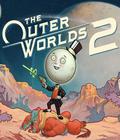Pre-order The Evil Within 2
Despite what can be best described as a story few people can be bothered to remember, The Evil Within ended up being a very good example of how survival horror games can still be executed rather well. The bleak atmosphere, grotesque creatures, and sense of panic coming from the inherent limitations of your hero may not pump out the primal scares of the early games in the genre, but its unsettling nature and higher difficulty level made it an experience that genre fans had to check out. It should come to no surprise, then, that The Evil Within 2 does what you would expect out of any sequel: stick to everything that worked and tweak things that were criticized. As long as you weren't expecting a near-revolutionary shift that happened to games like the Resident Evil series, your feelings on this sequel compared to the first title won't change at all.
The story starts off with a flashback. The hero of the first game, Detective Sebastian Castellanos, has just come home to witness his house ablaze. Worse, he finds that his daughter Lily is trapped inside the burning home. It turns out to be a nightmare, his daughter is still dead, and his wife had left him after the tragedy. Later on, he meets up with his old partner, who tells him that his daughter Lily is still alive and is the catalyst for a new machine that's designed to make people's lives better. The machine is on the fritz, and Sebastian is taken to make the machine work again and hopefully get his daughter back.
The good news is that the story has improved over the first game. Sebastian is now a more weathered character and much more emotional when reacting to the events of the game. Gone are the moments where he flippantly comments on something disturbing, so he's a more believable character. It also helps that the quest is more personal this time around, so players are more motivated to see it to the end.
The story has a few flaws. If you forgot about the first game or never played it, older characters and ideas will be lost on you, and the game doesn't catch you up on what happened or why some people have more gravitas than others. Another issue comes from the game's shift in focus during the middle area. Everyone you meet is connected in a reasonable way, so the shift between major antagonists isn't as jarring, but those who played the first game will remember how the narrative jumped all over the place with the barest of threads keeping it together.
It should also be noted that for a survival horror title, TEW2 is much less reliant on the genre's typical scare tactics. Jump scares are practically nonexistent, and other horror tricks — seeing monsters rushing at you at an erratic pace or via teleportation — are heavily telegraphed. Instead, the game relies more on an unsettling mood to convey the horror. Seeing a bunch of hanging bodies or photos of eyes and shaky furniture creates that feeling of unease, especially when nothing comes of it. Despite seeing it in a few other recent titles, it's always gross to witness someone get beaten to death while being force-fed barely cooked and decaying human flesh. The monster designs might seem like nothing more than a mish-mash of limbs and hair and heads, but they look disturbing enough, especially when they move faster than expected. Overall, it may not scare immediately, but the grotesque imagery certainly gets the horror vibe right.
The gameplay mechanics follow the first title rather closely. Sebastian is great with ranged weaponry, and the game does a good job of providing some of the expected weapons in the genre, like pistols, shotguns, and sniper rifles. The crossbow from the first game also returns, as does the ability to shoot regular, electric, and smoke-filled bolts. As expected, ammo is severely limited for all weapons, and while you can use hand axes, they break after just one hit. This leaves you with your knife as a constant companion, and you could live with it if Sebastian were capable of using it correctly.
For some reason, trying to attack an enemy with the knife is usually a recipe for death, as Sebastian's swings are slow and wide, and the weapon does insignificant damage. You can escape some enemy grabs if you have a bottle in your hand and have unlocked the ability to do so, but the bottle smash serves as a good opportunity to run instead of standing your ground. You don't have to burn bodies to kill them in this outing, so combat isn't as tedious as before.
Stealth becomes prominent since it provides more enemy kills if you exhibit a little patience. You can be a good distance from an enemy before the prompt appears for a stealth kill, and they're usually quick enough that you'll be able to quickly regain control of Sebastian and return to hiding before anyone spots you. Stealth is going to be something you'll want to do to avoid fights and conserve ammo and resources, but you'll hate it when you're trying to use it outdoors. The camera is already close enough to your body to drive home a feeling of claustrophobia, but it's terrible when you're trying to hide among the tall foliage. You may be hidden from the enemy, but you're also unable to see anything, so it's risky to exit from cover since you have no idea what awaits.
The mention of outdoor environments leads to one of the TEW2's bigger changes: a semi-open world. Instead of going from one level to another in an insane asylum, you're unleashed in the virtual town of Union. The town may not rival other open-world action titles in size, but it can be intimidating for a horror game. The constant enemy presence means that even something like a quick jaunt to the safe houses can feel daunting. You'll spend a great deal of time here, and it maintains enough of a normal appearance that you'll be reminded of the idyllic Silent Hill — except under unsettling clouds and the gaze of large creatures.
The open world also gives the player access to a few safe houses, where a multitude of other things can occur aside from saving the game. Make it to a wheelchair, and you can use the various colors of deceased monster goo to upgrade yourself with new moves or increased health and stamina. Access a workbench, and you can use materials to upgrade your weapons and make ammo for them. You can also make the same ammo in the field but at the cost of using up more materials. Luckily, the game is a little more generous about both resources and ammo this time around.
While that may make TEW2 sound like it would be easier than before, it isn't. The monsters are not only fast but strong to the point that even a good headshot might not be enough to take them down. The regular monsters also seem to be adept at using weapons, so one bearing an ax will have a good shot of hitting you from a distance. Going into stealth, those same creatures can annoy you by refusing to follow a set pattern, and they make you anxious by staying in one spot for longer than usual before turning around at the last second. Despite the open world, the monsters aren't always in the same spots and rarely allow you easy passage from one area to another. This is all before you face the bosses, who are formidable enough that you're constantly running and taking potshots to avoid getting thoroughly trounced in one good swipe.
Perhaps the best part of TEW2 is that the journey is long but never feels that way. The 17 chapters move along at the right pace, and you'll be surprised when one chapter ends and another begins. That surprise is amplified when you realize that the core questline can take between 12-15 hours to complete, depending on the difficulty level. Collectibles lengthen the experience a bit and give you some extra abilities and story beats, but the side-quests will take up a good chunk of your time since the rewards are very significant, and they feel like a natural part of the world instead of busy work.
Graphically, the game is another example of the benefits of the id tech engine as well as the pitfalls of creating a derivative of it. Texture work can be muddy in places, but cut scenes show off some very nice details. Color is a rarity in most horror games, but it is used very effectively here to amplify the horrific mood instead of serving as a contrast. The lighting, reflections, and shadows make everything creepy, as they play tricks with the perception of your world. There's a bit of pop-up with items in the far distance. It's nothing too terrible, but you will see it. The framerate is mostly stable on a base PS4, but come out of a loading screen from death, and the game stutters badly for 5-10 seconds before returning to normal.
The sound complements the game's tone nicely. Music is a rarity, and the moments when it does play provide you with nothing but dread. From the low hum of creeping evil to classical music playing before a grotesque display, the presence of a soundtrack usually means something bad will happen. The sound effects are as strong as ever, but the voice acting can be hit-and-miss. There's more emotion in the characters and their delivery this time around, but you'll catch some moments when the line is overacted or the wrong emotions are used. It isn't as bad as some of the early Resident Evil games or their contemporaries, though.
The Evil Within 2 is a good survival horror game for genre fans to sink their teeth into. The story makes more sense this time around, and the atmosphere delivers the right amount of unease, which is what will keep players plugging away to the end. The gameplay has been tweaked to be easier, but it's not to the point where you can go through without much trouble. Despite the presence of a few technical issues, TEW2 looks and sounds great, and it's certainly worth your time, even in this incredibly packed gaming year.
Score: 8.0/10
More articles about The Evil Within 2











 In The Evil Within 2, you play as Detective Sebastian Castellanos, who has a chance to save his daughter. Enter a world filled with nightmares and bring her back.
In The Evil Within 2, you play as Detective Sebastian Castellanos, who has a chance to save his daughter. Enter a world filled with nightmares and bring her back. 





















